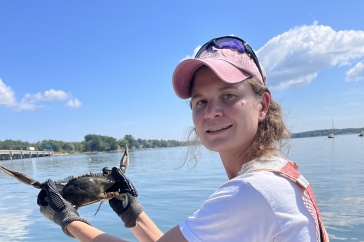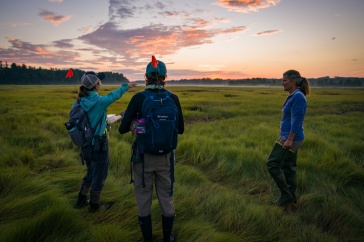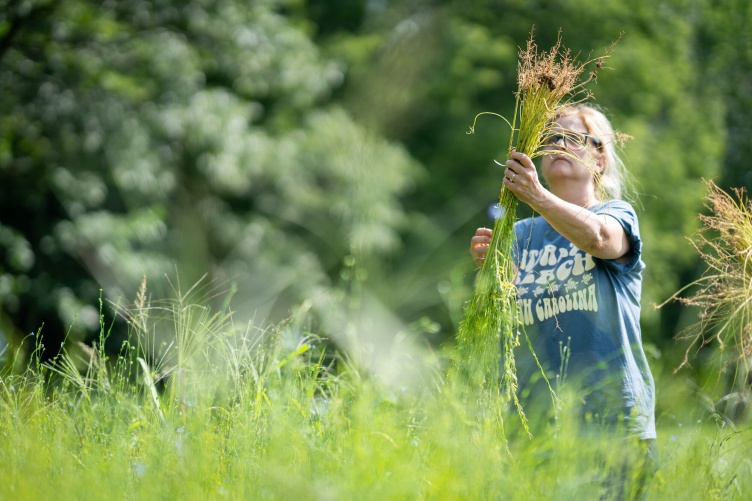
Beth Gallucci '24G, a museum studies student, harvests flax at Woodman Farm.
The path to a deeper understanding of rural New England’s pre-industrial textile economy begins in a muddy field on the edge of UNH’s Woodman Horticultural Research Farm. There, a historian and an agriculture professor, along with students in UNH’s museum studies program, have joined forces for an intimate, experiential understanding of an iconic fiber: Linen.
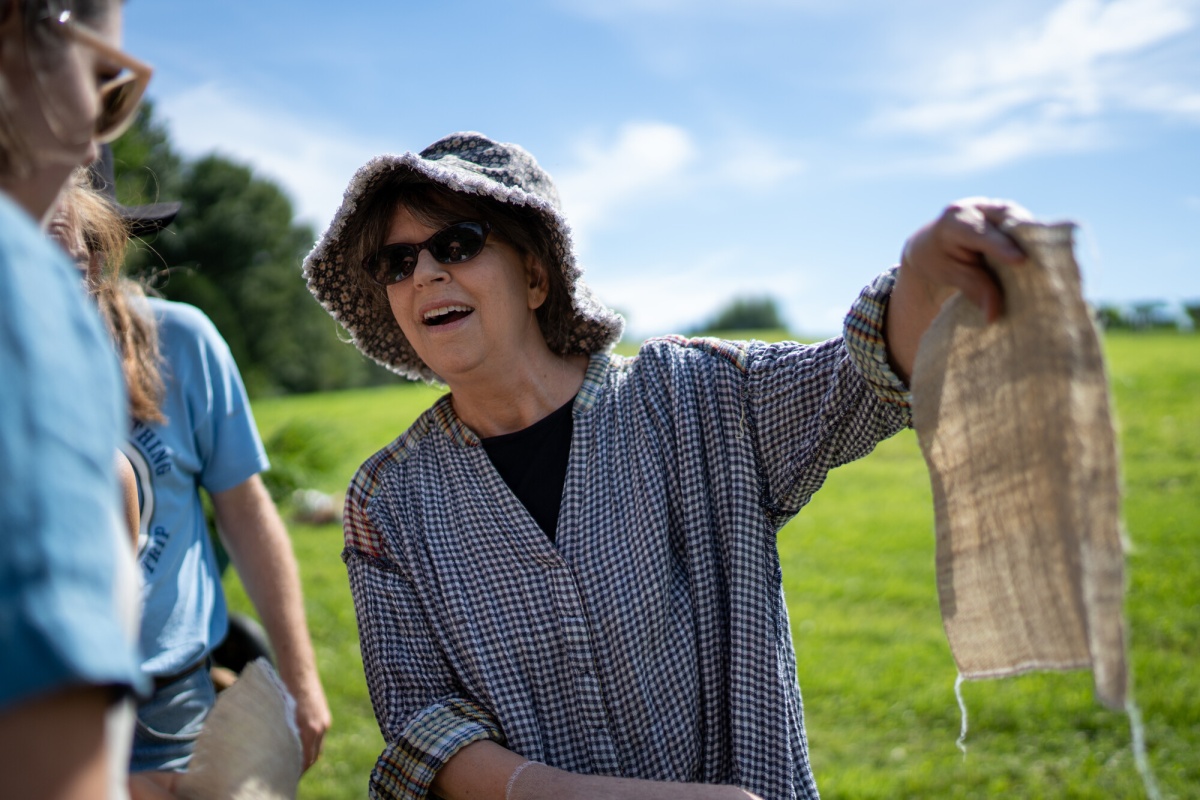
“Linen was such an important staple in New Hampshire,” says Kimberly Alexander, senior lecturer of history and the force behind The Flax to Linen Project. “The opportunity to deep dive into this single important fiber while actually growing it at UNH offers a tremendous opportunity for … research of 17th through early 19th century flax-growing and linen production in the Seacoast.”
The conceit of the initiative is straightforward: Untangle the history and prominence of linen in New England by planting flax, harvesting it, processing it into linen thread, weaving it into fabric and creating a garment. Along the way, daybooks — part diary, part calendar, part accounting ledger — and actual linen artifacts from local historical societies guide the authenticity of the process and put it in context of the people who did this work.
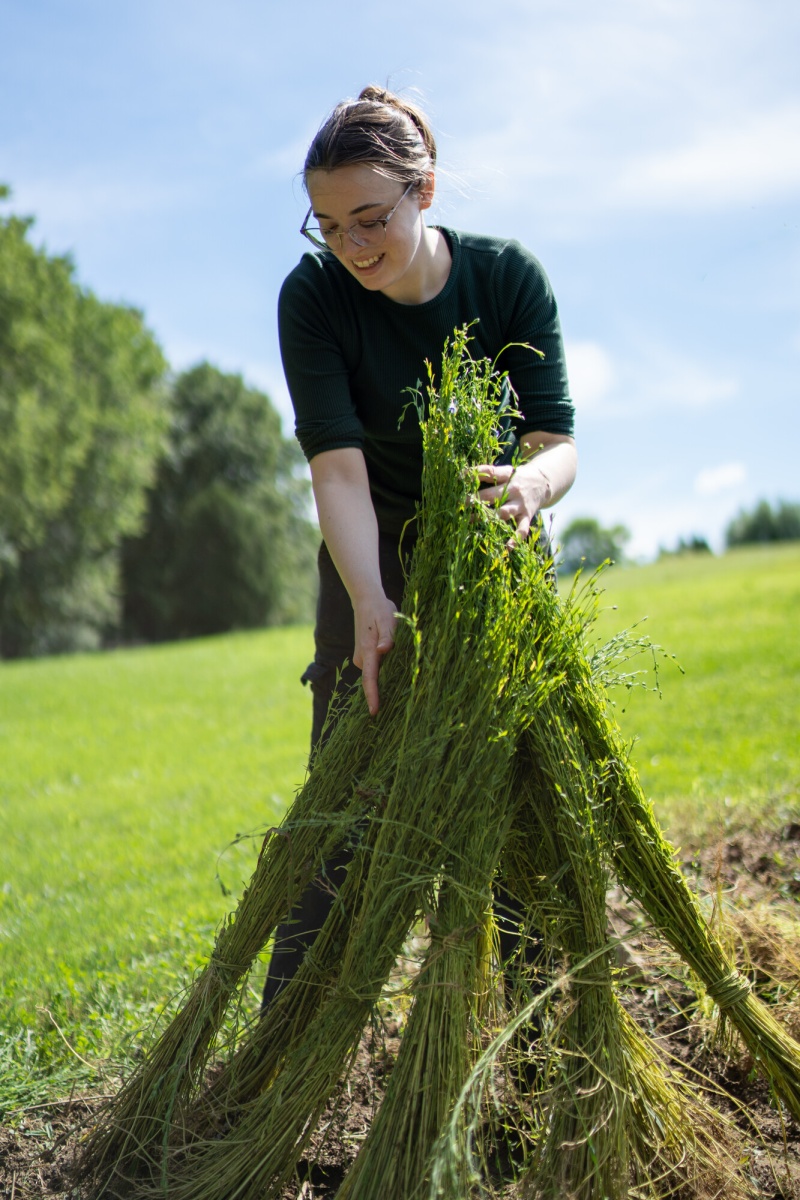
“The harvesting we’re doing is exactly what people were doing in the Seacoast 300 years ago,” says Alexander, who directs UNH’s museum studies master’s program.
The project, which has been funded by a James Hayes Fellowship from the UNH Center for the Humanities, grew from Alexander’s history course “From Homespun to Fast Fashion: A Global History of Textile.” Sophie MacDonald ’22, ’24G, a student in that class now working on Team Flax, suggested this hands-on approach to history, and Alexander bit.
Alexander turned to Becky Sideman, professor of agriculture, nutrition and food systems, who brought agricultural expertise to the project, sourcing flax seed, securing a plot at Woodman Farm, and even planting small nearby plots of indigo, used for dye, and cotton. Team Flax, which includes five museum studies graduate students, planted two varieties of flax seed — Avian and Nathalie — on May 17, and began harvesting in August.
After harvest, the team is processing the flax using techniques and tools that sound more Dr. Seuss than New England: Stooking, or standing the flax stalks in tied bundles to dry; retting, wetting the flax and drying it again; and scutching, getting rid of seeds and extraneous material. They’ll then spin and weave the flax and ultimately create a garment, a process that historically took a full year.
Alexander and Sideman anticipate this 21st century recreation will also span a year. Indeed, as the labor mounts, the team has dialed back its dirt-to-shirt ambitions. “We originally wanted to do a linen nightshirt, now we’re down to neckerchiefs,” Alexander says, only half joking.
In addition to understanding the importance of flax to the region, the project has shed new light on who worked this staple. A primarily home-based industry, the arduous work of producing clothing from flax was undertaken by women, enslaved people and children.
“Because of who was doing it it’s been really understudied,” says Sydney Rue ’24G. “This project is important for bringing out the voices of underrepresented groups.”
Alexander concurs, noting the important role this unsung labor contributed to household financial stability. “We’re restoring balance to the historic narrative one voice at a time — through every initialed homespun linen sheet, stamped tool and the daybooks and account books.”
Read more about the Flax to Linen Project on the team’s blog.
-
Written By:
Beth Potier | UNH Marketing | beth.potier@unh.edu | 2-1566
















































